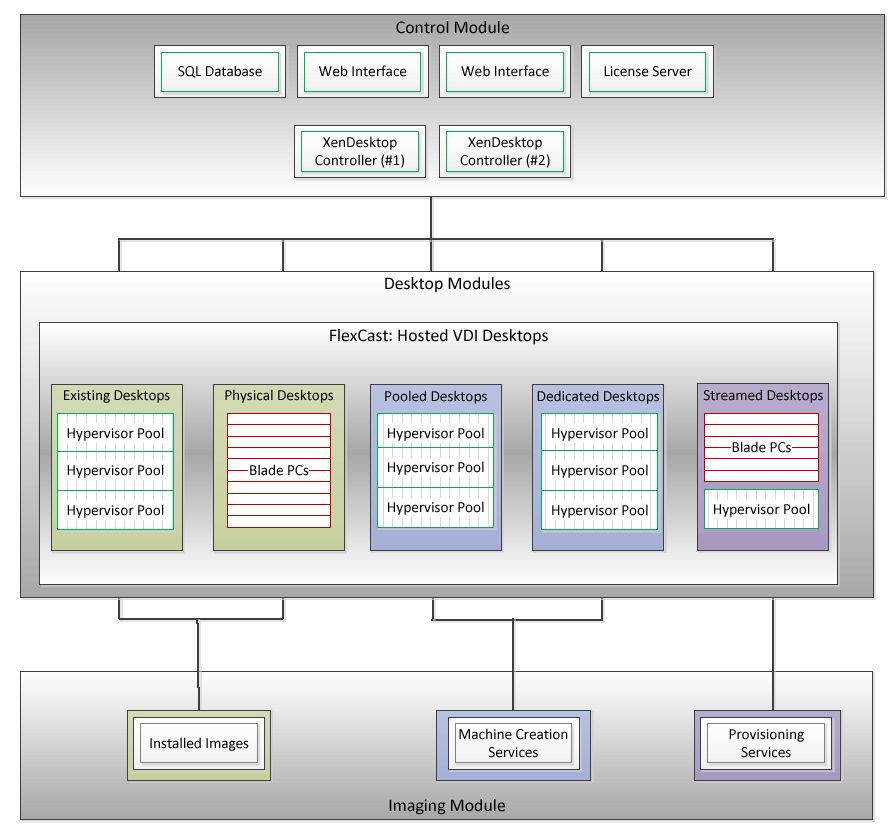Citrix Delivery Controller v5 Monitoring Using eG Enterprise
Citrix Delivery Controller 5 meets the desktop virtualization requirements of an organization with Citrix FlexCast™ delivery technology. With FlexCast, IT can deliver every type of virtual desktop, hosted or local, physical or virtual -each specifically tailored to meet the performance, security and flexibility requirements of each individual user.
With Citrix FlexCast, you can use five types of virtual desktops within the hosted VDI infrastructure. These are, namely, Existing, Physical, Pooled, Dedicated, and Streamed desktops. All these desktop groups can be easily integrated into Citrix’s modular architecture as indicated by Figure 1.

Figure 1 : How the Citrix Delivery Controller 5 service is delivered?
The modular architecture creates a single design for a data center, integrating all FlexCast models. The Control Module manages user access and virtual desktop allocation. The Desktop Modules integrates the desktop types mentioned above into the modular architecture. The Imaging module provides the virtual desktops with the master desktop image.
At the core of the Control Module of the Delivery Controller 5 architecture is the XenDesktop Controller or the Delivery Controller 5. The broker provides the link between the Web Interface and the XenDesktop site. The controllers authenticate users, enumerate resources for the users, and direct user launch requests to the appropriate virtual desktop. The controllers manage and maintain the state of the XenDesktop site to help control desktop startups, shut downs, and heart beats. The controllers constantly query and update the SQL database with site status, allowing controllers to go offline without impacting user activities. It is recommended that at least two controllers be deployed per XenDesktop site to provide high availability. As the site grows, additional controllers might be required if the allocated CPU cannot service the user requests fast enough.
A malfunctioning broker can hence cause significant delays in provisioning of desktops, thereby affecting the quality of the user experience with the XenDesktop service. To ensure the prompt delivery of virtual desktops to users, the broker has to be continuously monitored, and administrators proactively alerted to potential issues in its performance. This is what exactly eG Enterprise does!
